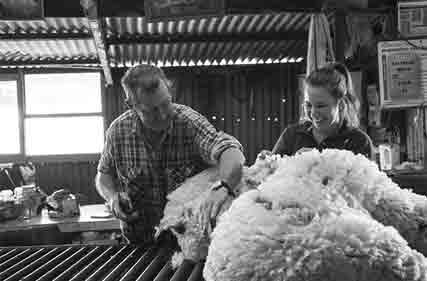 Merino Fleece exhibited overall weakness and despite movements in the Northern MPG last week, exporters reported higher demand for 17μ fleece compared to their slightly coarser 18μ counterparts. Merino Fleece exhibited overall weakness and despite movements in the Northern MPG last week, exporters reported higher demand for 17μ fleece compared to their slightly coarser 18μ counterparts.
Although reports of poor demand in this range may seem perplexing, it be as simple as a bubble in the stockpile levels. Wool containing 2% VM in merino fleece adjusted prices downward compared to the previous week. The top purchasers included a mix of large trading houses, Chinese indent, and Chinese processors, with the top four buyers accounting for 45% of the fleece offering. Merino Skirtings experienced little to no change in prices compared to the previous week. Demand for lots purchased for the knitwear sector remained firm, with longer/FNF skirts being acquired for blending with fleece. Despite these currency fluctuations, the EMI in USD only decreased by 1 cent. Exporters primarily hedge their currency to mitigate purchasing commitment risks, yet the volatile nature of the USD makes forward-selling wool a challenge. Exporters in China and India continue to employ low-risk strategies, minimizing stock accumulation. Their price-sensitive approach, combined with reduced European competition, contributes to price erosion in the superfine wool segment. Recent unrest in the Middle East has further dampened the slowly recovering confidence levels, particularly in Europe. |
| Crossbreds Fleece closed the week with a slight decrease in prices. As mentioned last week, purchases for mid-month shipping deadlines concluded, potentially contributing to last week’s slight uptick in the XB fleece market. While prices moderated last week, competition continued to be dominated by large Australian trading houses and Chinese trading companies, with the top four buyers collectively purchasing around 60% of the national XB offering.
Merino Cardings generally saw lower prices across all centres, with Merino locks, average Merino crutching’s, and merino Stains barely maintaining last week’s prices. High-yielding merino crutchings’ that fit into the “open top” category continued to attract buyer interest, at times fetching double the price of average bulk and lower-yielding crutching’s. XB Oddments displayed little to no improvement from their low-price basis. With 44,552 bales set to be offered nationally this week, both the Merino and XB combing wool market are expected to remain steady, given the current lower AUD exchange rates maintain the current level. Important: Vote FOR Vote Against Appoint Proxy Holder Don MacDonald (100%) email don@macwool.com.au -Moses and Son |
